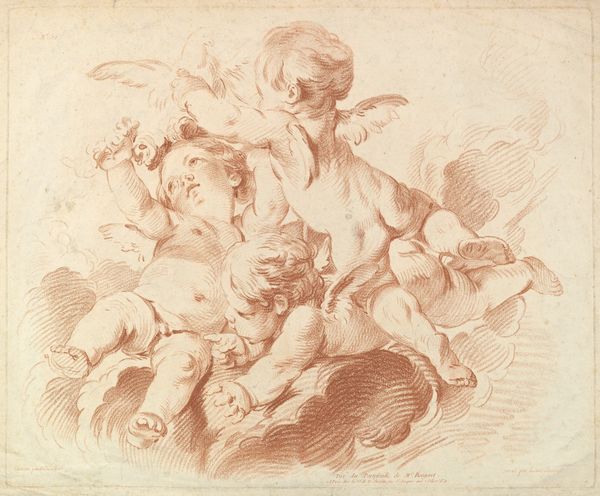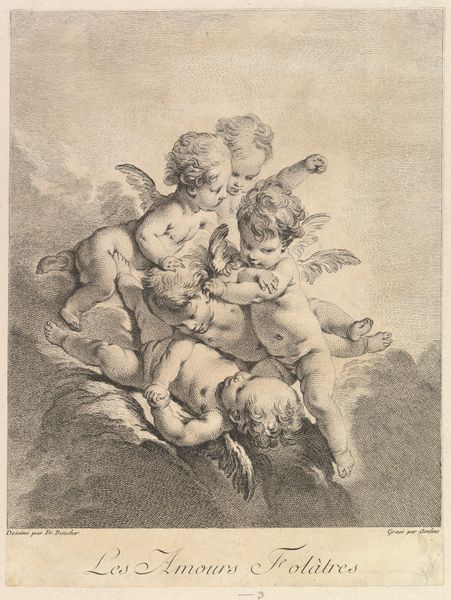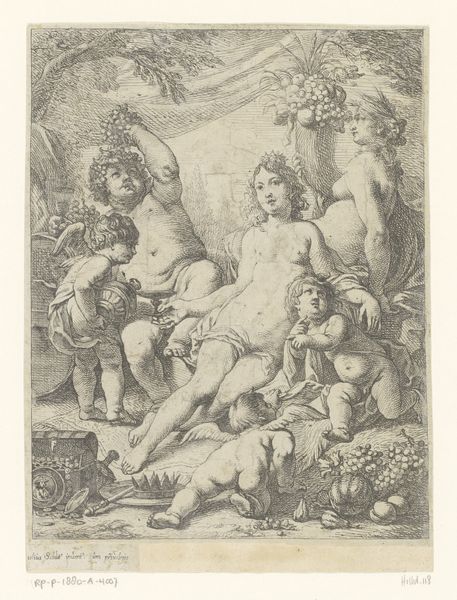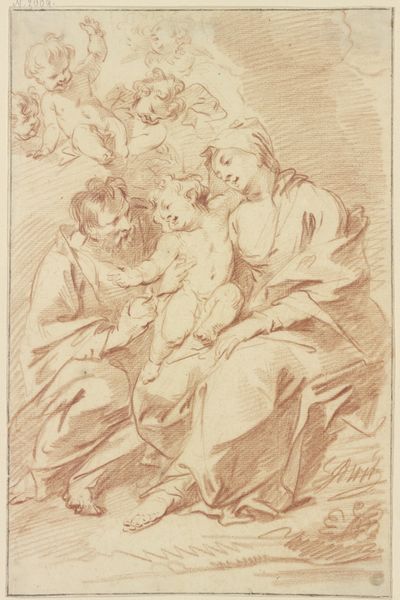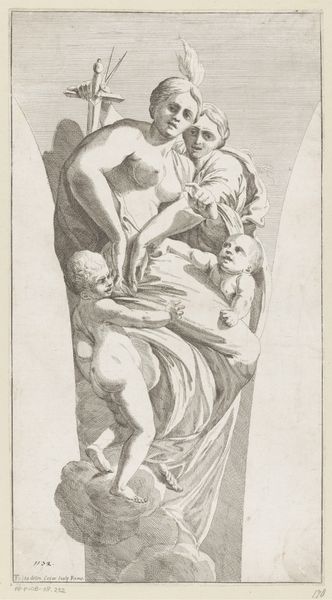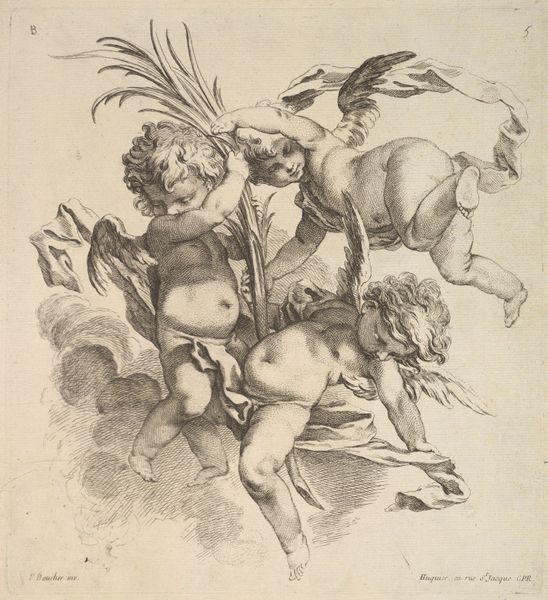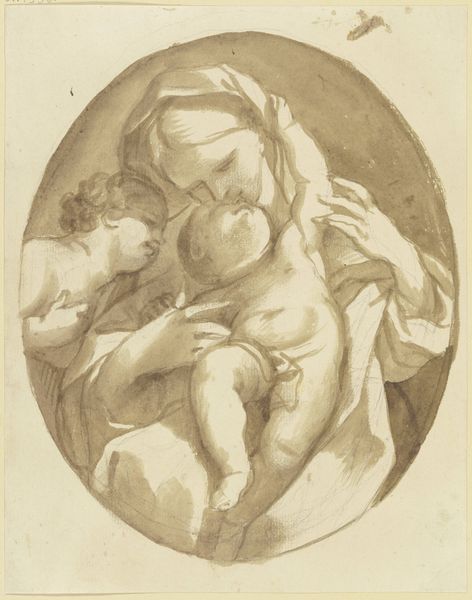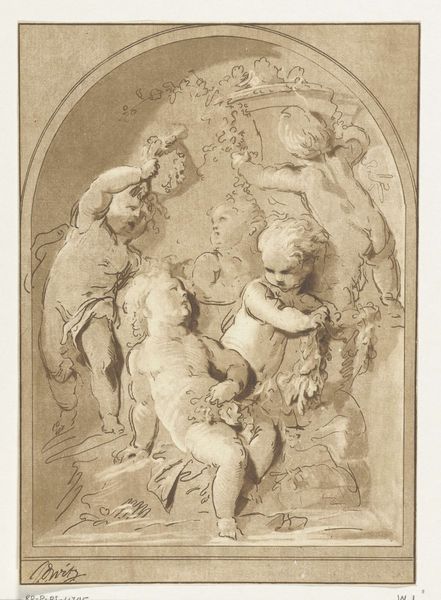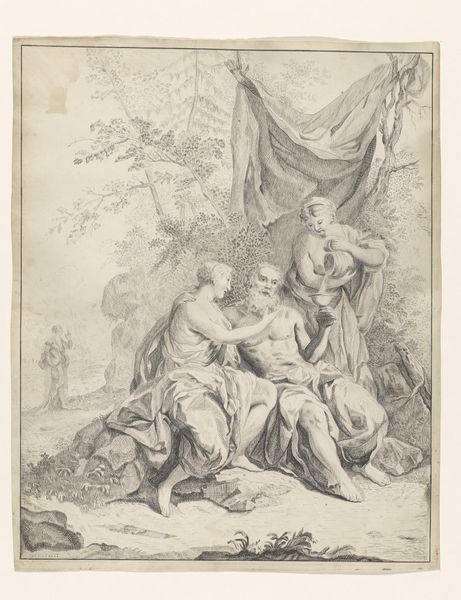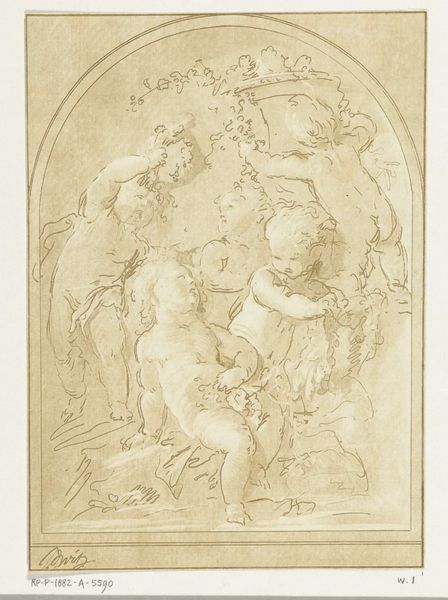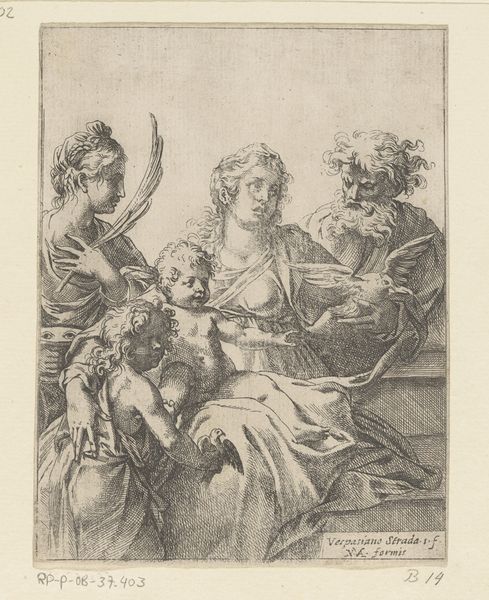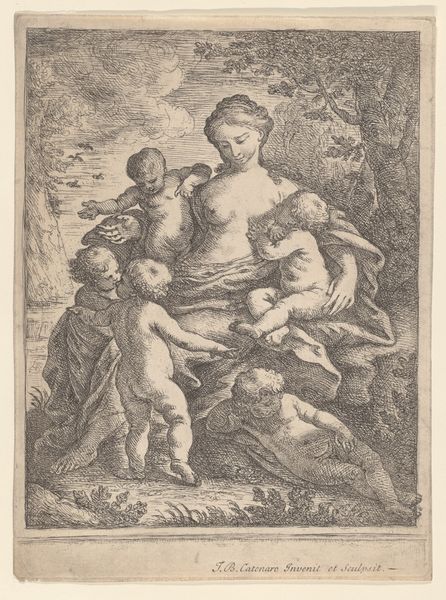
drawing, print, engraving
#
drawing
#
allegory
# print
#
figuration
#
line
#
engraving
#
rococo
Dimensions: Sheet: 10 7/16 x 8 7/16 in. (26.5 x 21.5 cm)
Copyright: Public Domain
Curator: Here we have Pierre Alexandre Aveline’s engraving, "Three Loves Next to a Cartouche," created sometime between 1727 and 1760. It's a delightful example of Rococo aesthetics currently residing at the Metropolitan Museum of Art. Editor: Gosh, these cherubs are mischievous! It's pure, unadulterated fluff, like a sugared almond dissolving on your tongue. But with surprisingly sharp edges. Curator: The composition definitely embodies the era's penchant for asymmetry and playful themes. Aveline, trained as an engraver, cleverly reproduces the airy qualities you'd find in a Boucher drawing using fine, economical lines. Notice the texture variations he achieves to suggest depth and form. Editor: Precisely! You can almost feel the softness of their chubby little bodies contrasting with the rigid cartouche beside them, ready to receive whatever message—serious or frivolous—it’s destined for. It's funny how something so frivolous in subject can be incredibly serious in its technique. Curator: The choice of engraving – a meticulous, labour-intensive medium - elevates what might seem like mere decoration to a commentary on value, or perhaps labor itself. The reproductive print was designed for consumption beyond elite circles and made artwork accessible to many, despite the work required to produce the print. Editor: Indeed. These plump cherubs, cavorting near a blank cartouche – a space intended for grand pronouncements— feels delightfully absurd! They're interrupting art's grand plans with childish play. Makes you wonder about Aveline’s perspective—embracing the absurdity, maybe? Curator: That tension – between craft and consumerism, message and ornamentation – is what makes the piece so resonant. It allows for many interpretations; is it decoration or social critique? Ultimately, that ambiguity speaks to the complex realities of artistic production at the time. Editor: Well, I’m certainly adding this to my personal collection of delightful absurdities—at least in my mind's eye. Thanks for spotlighting its interesting blend of silliness and shrewdness.
Comments
No comments
Be the first to comment and join the conversation on the ultimate creative platform.
